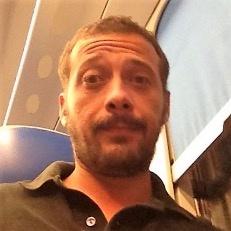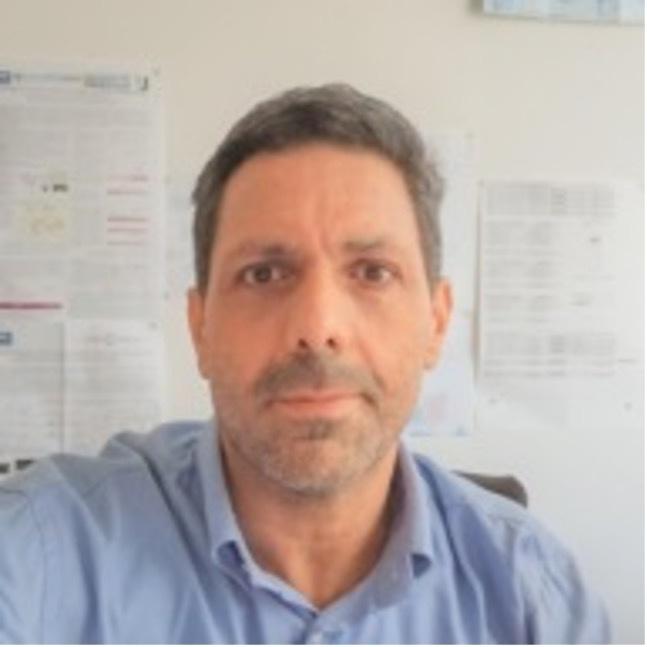Strengthening of the Italian Research Infrastructure for Metrology and Open Access Data in support to the Agrifood
ENEA3 – Smart Spectoscopical Sensors and IoT
(Reference person: Luca Fiorani)
The OU Smart spectroscopical sensors and IoT applies spectroscopical techniques, in general, and laser photoacoustic spectroscopy (LPAS), in particular, to the quality control of the agri-food chain. Although a wide range of cutting-edge methods are in the armoury of the OU – LIBS (Laser induced breakdown spectroscopy), FTIR (Fourier-transform infrared spectrosocopy), Raman spectroscopy, Spectro fluorometry, Remote sensing – its flagship is laser photoacoustic spectroscopy (LPAS). In a typical LPAS system, a laser beam is modulated at an audio frequency and injected into a resonant cell where it hits the investigated sample that absorbs the incident radiation. Consequently, the part of the sample irradiated by the beam experiences a rise in temperature and volume, thus producing a pressure wave. In general, the sound detection subsystem is made of a microphone connected with a lock-in amplifier synchronized with the modulator. The output signal is proportional to the sample absorption and typical experiments are conducted in the “fingerprint region”. Main advantages are rapidity, sensitivity, specificity, simplicity, repeatability, in situ measurement, uncomplicated sampling, ease of use, and cost-effectiveness. Current systems are robust and small, allowing to develop portable systems in industrial settings a portable system.
The OU will make available its smart sensors and devices to the end-user community, along with a spectroscopical database and a virtual Lab.

Luca Fiorani
Holds a PhD in laser spectroscopy, 2 ongoing 2nd level MSc (economics & politics, CBRNe), MSc (physics). Researcher at ENEA and professor at LUMSA and SOPHIA universities, authored 8 patents and 99 peer-review papers. Ha acts as Principal Investigator in agrifood-related projects, managing more than 2 million €; some example: Task 2 of the “Mild technologies and addition of natural antimicrobials for shelf-life extension and safety improvement of fruit juices” ENEA project, “FoodSafety” ENEA project, “SafeFood” work package of the “TecHea” ENEA project, “TESLA-Laser techniques for the safety of food and water” ROP-ERDF project, ENEA participation in “Sensors, Predictive Process Modelling and Other ICT technologies” task of the NRRP National Center Agritech – Spoke 9.

Salvatore Almaviva
Is a physicist and researcher at ENEA in the field of atomic and molecular laser spectroscopy, signal processing and chemometric analysis. Current interests concern the development and application of the Raman and LIBS (Laser-Induced Breakdown Spectroscopy) technique in various fields. In particular, he has carried out research, development, design and testing of LIBS and Raman laser systems in the field of security, agrifood and biological, cultural heritage and nuclear fusion. He has been involved in numerous national and international research projects on these issues and the results of his activities have been presented at national and international conferences and published in peer review journals.

Florinda Artuso
Is researcher at ENEA since 2002. Graduated with honours in Chemistry, with a Ph.D. in Materials Science, her research experience include: photovoltaics, electrochemistry, monitoring of greenhouse gases and atmospheric pollutants. Since 2010 she works at the FSN-TECFIS-DIM Laboratory of ENEA Frascati and is contact person of the analytical chemistry lab. Research fields of interest cover: studies of phytoplankton pigment composition by HPLC for satellite data validation, laser based spectroscopic techniques applied to food fraud detection and environmental monitoring. Expert Reviewer of the IPCC Fifth Assessment Report (WGI AR5), 2013. Chairperson of EARSeL special interest group on “Remote Sensing of the Coastal Zones”, 2021. She is author/co-author of about 85 peer-reviewed papers and conference communications (oral/poster) and referee of international scientific journals.

Isabella Giardina
Is Researcher at ENEA from 2004. Graduated in Chemistry (University La Sapienza of Rome) with experience in analytical chemistry, 2nd level Master’s Degree in Nuclear Techniques for Industry, Environment and Cultural Heritage, she has fifteen years of working experience in radiochemistry at the Radioactivity Monitoring and Measurement Laboratory of the Radiation Protection Institute (radionuclides alpha, beta and gamma emitters determination in biological and environmental matrices and in nuclear wastes). Currently, she is working at the FSN-TECFIS-DIM Laboratory of ENEA Frascati on analytical determinations to support laser systems calibration (particularly determination of pigments in phytoplankton and other natural matrices by HPLC) and on experiments to test multi-sensor systems for the recognition of substances in the CBRNe field and in the agrifood sector.

Antonia Lai
Is graduated in Biology at La Sapienza University of Rome. Senior Scientist at ENEA (Casaccia) from 1988, in 1999 she moved to ENEA Frascati where has set up ex novo and equipped with specific instruments, the Biological Diagnostics laboratory, of which she is the contact person. In charge as ENEA’s scientific responsible in several national and international projects for security and safety, food quality improvement, detection of contaminants and infection in plants (host-parasite interaction), in vivo monitoring of the physiological status of the horticultural plants, by using non-destructive technologies as well as laser, optical, spectroscopic and image analysis. In the framework of the security and safety the research activities are focused on the early detection and identification of dangerous microorganisms and tumour markers. She authored about 100 papers and 2 patents.

Ivano Menicucci
Is a technical collaborator and has been working in the FSN-TECFIS-DIM laboratory of ENEA since 2000. With a passion since childhood for electronics, he designs, builds, and programs electronic boards and is co-inventor on six patents. Over the years, he has participated in the implementation of complex systems and international measurement campaigns, including on oceanographic ships.

Marcello Nuvoli
Is technical collaborator at the FSN-TECFIS-DIM Laboratory of ENEA, with a secondary school diploma in industrial engineering. He performs activities on: mechanical design and drawings of experimental prototypes of apparatuses using laser sources for spectroscopy and 3d scanners; laboratory technician of laser metrology applications; measurement campaigns in Italy and abroad, with instruments designed by the laboratory; supervision of the realization of instruments commissioned to external firms on ENEA drawings and technical specifications.

Alessandra Pasquo
Is researcher at the ENEA Research Center of Frascati. With a degree in Biological Science cum laude, she obtained her PhD at the University Sapienza of Rome. Her main activities include: analysis and biochemical characterization of biological macromolecules involved in human pathologies; use of recombinant and/or engineered molecules for the development of diagnostic SPR (Surface Plasmon Resonance) and SERS (Surface Enhanced Raman spectroscopy) sensors in biomedical and environmental fields; real time analysis of food products to identify adulterants and contaminants with laser photoacoustic spectroscopy (LPAS). Lectureships at University of Catanzaro and Sapienza University of Rome in Enzymology, Biochemistry and Clinical Biochemistry. Author of 37 publications in international peer-reviewed journals and 2 patents.

Marco Pistilli
Is a technical collaborator at ENEA (C.R. Frascati) engaged in mechanical design and fabrication of prototypes and instrumentation for the Diagnostics and Metrology Laboratory, employed in the areas of safety, environment and cultural heritage.

Fabio Pollastrone
Is researcher at the FSN-TECFIS-DIM Laboratory of ENEA since 2000. His main activities include: design, construction and testing of electronic systems based on FPGAs, DSPs or microcontrollers for diagnostics in a nuclear environment (optical radar, interferometry, reflectometry, bolometry), real time control systems, real time image processing, laser photoacoustic spectroscopy (LPAS). Professor at University of Rome Tor Vergata – degree course in Electronic Engineering. From 2016 to now, lecturer in the course “Digital Systems for the Processing of Signals and Images (SDESI)” years: 2016 - 2021. From 2021 to now holder of the SDESI course (6 CFU). Holder of 4 patents and author of 37 publications in international journals, 9 of which as corresponding author.

Adriana Puiu
Is graduated in Physics, with a PhD in Quantum Electronics and Plasmas (Tor Vergata University of Rome). Researcher at the FSN-TECFIS-DIM Laboratory of the ENEA Research Center of Frascati, she has experience in the field of optics and photonics, molecular spectroscopy (LPAS, FTIR, Raman, LIF), design and construction of optical systems and laser sensors for photoacoustic spectroscopy applications, fluorescence spectroscopy , lidar remote sensing, multivariate statistical analysis for the treatment of spectroscopic data (for applications in life sciences, biomedicine, land safety, food safety, water quality, etc.) in the frame of numerous national and European projects. She is author and co-author of scientific publications in national and international journals.








